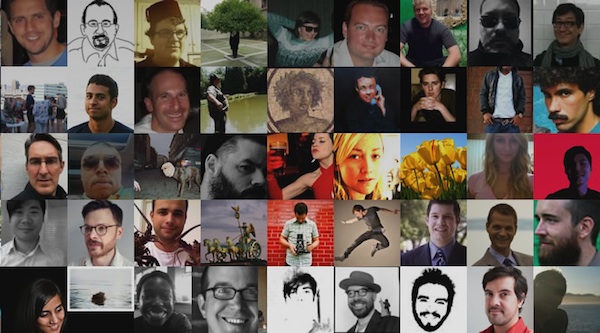

Remember how disappointed people were, around Halloween of last year, when Google Reader was suddenly stripped of its social features and redesigned to look like the rest of Google’s properties?
Robin Sloan lamented:
It’s like I had these great traveling companions on a long journey across an unfamiliar landscape — think forests, rivers, hills — and now, after like…a bear attack in the night…we’ve been split up. Scattered. No sign of anybody anywhere.
Hellooo? Just an echo.
For many users, Google Reader was a tight, private, conversational network. But it was doomed never to be compatible with Google’s belated embrace of social media and a network — Google+ — designed for scale.
“I think because Google wasn’t quite paying attention to [Reader], it never built in the incentives to grow that network as large as it could possibly be,” said Jake Levine, the general manager at News.me.
 And that was its charm. “It was hard for people to figure out. So those barriers, those product problems…those bugs were features, because it limited the size of the network and it made it inherently more conversational,” he said.
And that was its charm. “It was hard for people to figure out. So those barriers, those product problems…those bugs were features, because it limited the size of the network and it made it inherently more conversational,” he said.
Reader was effectively a purpose-built network, like Instagram or Foursquare, a place for people to gather around a single thing — in this case, news. Now News.me is trying to create the same thing, starting with a new iPhone app out today.
News.me is in the category of apps (Percolate, Flud, formerly Summify) that cut through the din of social media and serve personalized story recommendations based on what a user’s friends are sharing. But News.me wants to stand out by becoming its own social network. A user can import friends from Twitter and Facebook, but what happens in the app stays in the app. Buzzfeed-style “reactions” on stories (ha!, wow, awesome, sad, really?) are not visible elsewhere — like Instagram, News.me has no desktop interface.
“Not only is discovery a challenge on networks like Twitter and Facebook, in that there’s so much stuff, but conversations are a challenge…These networks are evolving from conversational media to broadcast media,” Levine said. There are a lot of people you might follow whose news judgment you don’t necessarily trust.
“So we asked ourselves, how do we build something that takes the discovery value of Twitter and Facebook and combine that with the ease of use and conversational nature of a platform like email” — still the No. 1 way that people share news.
When we last covered News.me in September, the company had spun out from Bitly and ditched its paid content model. There isn’t a business plan yet. (One of the company’s principal investors is big brother Betaworks.) In typical startup fashion, Levine said he is focused on building a large user base before figuring out how to make money.
The iPad app, previously $0.99 a week or $34.99 a year, was launched in April 2011 but didn’t get much traction. The News.me daily email digest, launched at the same time, “consistently had high engagement and continued to grow,” Levine said, with open and clickthrough rates averaging above 40 percent. So the iPhone app is drawing on what Levine sees as the “latent network” of the email product.
It’s early and the app is basic. News.me is a “read-only” consumption app, for now. You can’t yet share articles within the News.me ecosystem. And that’s the challenge for the company: With purpose-built networks like Foursquare and Instagram, the consumer and the producer are the same person — the creating happens inside the app. With News.me, users are sharing things created elsewhere.
One clever feature available now demonstrates how this might work down the road: Whenever you “favorite” a tweet on Twitter, that link is automatically ingested into your News.me Reading List. It’s dead-simple bookmarking.
Call the nascent network a niche or call it a silo, but news organizations are also experimenting with the “closed” approach. With Facebook apps such as WSJ Social and the Washington Post Social Reader, the experience occurs entirely inside Facebook, keeping the reader captive. Those apps may not drive traffic back to the home page, but they do serve up more ads and increase time spent.
Levine said he will watch carefully to see how users adapt to the network, or the other way around. That’s more useful than tallying download numbers.
“The download number is an indicator of how good our PR is, not how good the product is. What matters is what happens after launch. Is it growing? Do we have a group of users that come back to it every single freakin’ day? And are they telling their friends about it? Those are the metrics that we’re paying attention to.”